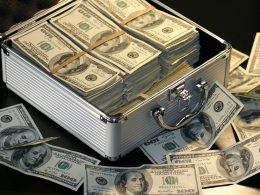Table of Contents Show
Coming up with innovative ideas is crucial for any business wanting to succeed in today’s competitive landscape. However, the process of generating those game-changing concepts is not always straightforward. This comprehensive guide will provide entrepreneurs and business owners with a blueprint for ideating in an efficient and effective way.
Why Idea Generation Matters
Without ideas, businesses lack direction and risk falling behind rivals who continually innovate. Idea generation is thus a pivotal growth driver that enables organizations to:
- Spot new opportunities and pivot accordingly
- Solve problems creatively
- Meet shifting customer demands
- Streamline operations
- Gain competitive edges
Simply put, idea generation powers strategic decision-making and progress. For established companies, it sustains relevance. For startups and small businesses, it catalyzes growth.
Core Principles for Effective Ideation
Certain guidelines underpin any successful idea generation process. Keep these best practices in mind:
Define Clear Goals First
Ideating without purpose wastes time and energy. Defining goals and objectives grounds the process in strategy and priorities. Ask yourself:
- What specific issues need solving?
- What opportunities can be captured?
- How will new ideas align with overall vision?
Having concrete goals streamlines ideating and provides helpful evaluation criteria later when selecting the strongest concepts.
Involve a Diverse Team
Collaborative ideation leverages diverse perspectives, knowledge and capabilities across an organization.
- Draw participants from different departments, levels and backgrounds.
- Assign clear responsibilities to optimize group dynamics.
- Designate a facilitator to guide discussions and keep things on track.
Varying insights enrich ideation and lead to more novel, workable solutions.
Foster a Creative Environment
Innovation thrives when teams feel psychologically safe to imagine freely.
- Encourage crazy concepts without judgment.
- Build on others’ ideas through constructive discussion.
- Withhold criticism and evaluation until later stages.
Positive, trusting environments inspire the uninhibited thinking that sparks breakthroughs.
The 6 Steps of the Idea Generation Process
With core principles in mind, here is a step-by-step process for generating great ideas:
1. Identify Challenges or Opportunities
Carefully identifying problems to solve or opportunities to capitalize on focuses ideation in the right direction. Ask:
- What pain points do customers experience?
- Where are operational inefficiencies or bottlenecks?
- What current trends or innovations could be leveraged?
Analyze target users, conduct market research, gather employee feedback and examine processes to pinpoint fruitful areas for new ideas.
2. Gather Input
Next, gather input from various sources to build foundational knowledge. Useful insights can come from:
- Customer research – Surveys, interviews, feedback
- Employees – especially frontline staff with user insights
- Third-party experts – analysts, academics, consultants
- Competitor analysis – products, marketing, processes
Input widens perspectives and helps ideate within realistic constraints later.
3. Brainstorm Extensively
This is when brainstorming solutions really takes off. The goal here is to generate a large quantity of varied ideas.
- Hold several short sessions over multiple days.
- Use methods like brainwriting and reverse brainstorming.
- Encourage wild concepts – they can spark new directions.
- Build on others’ ideas.
Record all concepts without prematurely dismissing anything. Quantity breeds quality.
4. Review and Refine
Next, review brainstorming results and refine the most promising ideas through:
- Combining complementary concepts
- Adding detail around feasibility and implementation
- Researching existing solutions for inspiration
- Eliminating impracticalities
Thinking creatively, teams refine earlier ideas into more workable solutions.
5. Analyze and Prioritize
Now it’s time to narrow down concepts by:
- Researching best practices and case studies
- Evaluating costs, resources and capabilities needed
- Estimating ROI potential
- Prioritizing by strategic alignment and impact
This vital analysis stage filters concepts and highlights those worth pursuing.
6. Test and Validate
Finally, test out top ideas on a small scale by:
- Creating minimum viable prototypes
- Trialing with a small group of target users
- Examining testing results and user feedback
- Tweaking concepts based on learnings
These steps help validate ideas before major development investment occurs.
Tips to Enhance Idea Generation
Keep these tips in mind to get more from brainstorming sessions:
- Vary locations to stimulate fresh thinking. Offsite retreats can be very effective.
- Set timed activities to maintain focus.
- Use breakout groups and rotations to let discussions evolve.
- Visualize ideas through illustrations, mockups and diagrams.
- Keep energy levels up with regular short breaks.
- Have lots of writing materials on hand to capture concepts.
- Leverage technology tools like ideation software, analytics and AI.
- Maintain a solutions-focused, judgment-free tone throughout.
- Appoint someone to record all ideas and share daily recaps.
With practice and an optimally designed process, any business can get better at generating ideas systematically over time.
Turning Ideas into Reality
Of course, ideation means little without execution. Once strong concepts are developed, businesses must then shift focus to:
- Conducting in-depth analysis around resourcing, workflows, technical feasibility, etc.
- Developing a strategic implementation roadmap and plan
- Securing buy-in and commitment from all stakeholders
- Piloting and incrementally scaling the solution
- Closely monitoring performance metrics and making adjustments
The most brilliant ideas flounder without disciplined execution. Idea generation marks the starting line, not the finish line, for business success.
FAQs About Idea Generation
What are some good online idea generation tools?
Some excellent online tools for ideation include:
- Miro – a virtual whiteboard for visual collaboration
- MindMeister – mind mapping software
- Quirky – inventors’ community for product development
- IdeaScale – for crowdsourced innovation programs
- Cloverpop – decision-making software with built-in ideation
How can I create a culture of innovation?
- Make creativity part of company values and vision
- Allow time for regular ideation activities
- Recognize and reward novel solutions
- Accept failures and create psychological safety
- Offer training in creative thinking methods
- Provide resources and space for experimentation
- Lead by example – model innovative thinking
What questions should I ask when generating new ideas?
Useful questions include:
- How can we improve upon what already exists?
- What fresh perspectives can we apply?
- How could technology help solve this problem?
- What would a specific user segment want?
- What do competitors not offer that we could?
- What resources/assets could be leveraged differently?
Conclusion
For any enterprise, innovation is an imperative. By mastering the structured practice of generating great ideas, organizations gain huge competitive advantages. They identify unseen opportunities, stay ahead of evolving consumer demands and continuously sharpen their operations. Idea generation sets businesses on a path to ongoing improvement and strategic renewal.
Through careful preparation, well-designed processes and consistent practice over time, most organizations can get better at producing game-changing ideas. While good concepts are invaluable, companies must then expend the effort to execute them effectively to achieve real-world impact. Ultimately, a robust innovation culture where ideation and implementation flourish will lead any business to new heights of success.







